Fast FAACt Friday: On Symbols and Reading
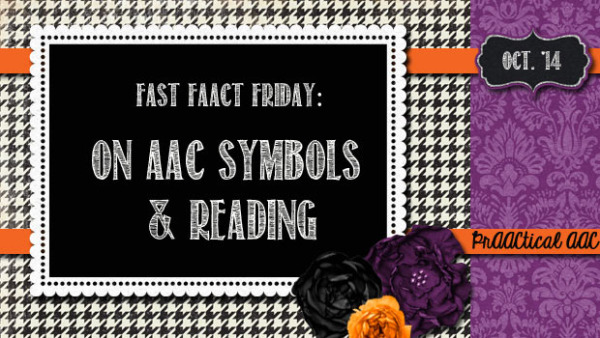
When we provide literacy experiences to pre-readers, a question emerges: Should we add symbols to the text? For those of us who have been prAACticing for awhile (you know who you are, friends), there has been a shift in our thinking.
Early on, we tried to add symbols to the words. Our thinking was that doing so would enhance the client’s ability to learn to read.
A few years ago, we re-examined that belief. Here’s why.
- Many times, our clients didn’t really know the symbols anyway. Symbols for frequently used words (like of, some, and know) are not at all transparent. So the notion that the symbols would help them understand what they were reading often didn’t pan out.
- We want the learners to (eventually) develop their reading skills and be able to read conventional text. The symbols distract attention away from the print/text. If we want the learner to acquire conventional reading skills (e.g., letter-sound correspondance, decoding, site word recognition), they need to pay attention to the printed letters and words. Adding symbols diverts the focus from the text.
There are still times when adding the symbols makes sense. If learning to read conventionally is not a priority for the long or short term, we may decide to add symbols to the printed words. We’re not ready to give up on conventional literacy skills for most AAC learners, though, so generally we stick with print and forgo the AAC symbols.
Bottom line: Text emmbellished with AAC symbols doesn’t seem to help our clients develop traditional reading skills.
If the goal of the activity is communication, the AAC symbols are essential. But if the goal is literacy, reconsider whether the symbols truly help the AAC learner.
::::::::::::::::::::::::::::::::::::::::::::::::::::
For more information on this and other things related to literacy and students with AAC needs, see this great article by Karen Erickson, Penny Hatch, and Sally Clendon.
Erickson, K., Hatch, P., & Clendon, S. (2010). Literacy, assistive technology, and students with significant disabilities. Focus on Exceptional Children, 42(5), 1 – 16.
Filed under: PrAACtical Thinking
This post was written by Carole Zangari

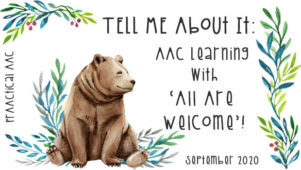
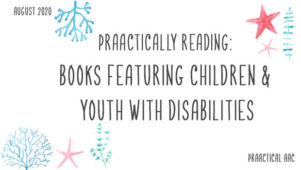
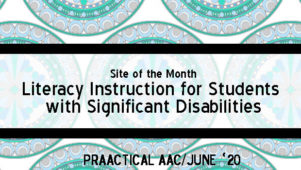
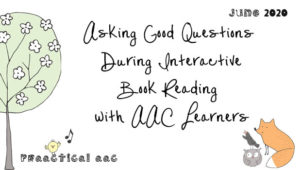
4 Comments
Hi Carole, I will be looking up this article. I am very interested in this research. Do you have any info/research or article leads about using bliss and the pros and cons to support literacy?
HEY! I really enjoyed this post. We were at a Regional Tech Mtg. TODAY and the question came up about UNIQUE and why some of the books don’t include the ‘symbolated text’.
We discussed what we (some of us!) learned from Karen Erickson a few years ago about literacy and communication. Yes, basically that symbols may be a distraction.We want to give our students with complex communication needs the opportunity to learn to read as ‘typical readers’ learn using their ABC’s! As always it was a lively discussion with strong feelings. And once again you capture the main points in such a great (praactical and comprehensive) way. I ENJOY how you leave the topic for the reader of this blog to consider. Really nice that UNIQUE has the feature to turn off or on symbols. Something for everyone.
Absolutely, Rena. A one-size-fits-all approach rarely works. Different kids, different needs, different goals. Thinking through the issues and making a decision based on a particular learner’s situation is usually what works best. Thanks for taking the time to share. Miss you!
In my experience, I have found that symbol supported text can help early readers understand that each word has a meaning and begin to follow along with each word one by one (pre-reading skills). However, I think if the goal is to teach the child to read text, the symbols should be faded as soon as possible so that they are attending to the text. I am also interested in further research on this topic.